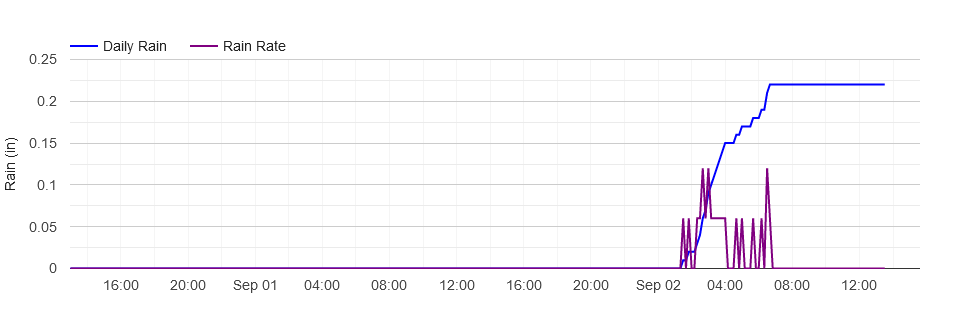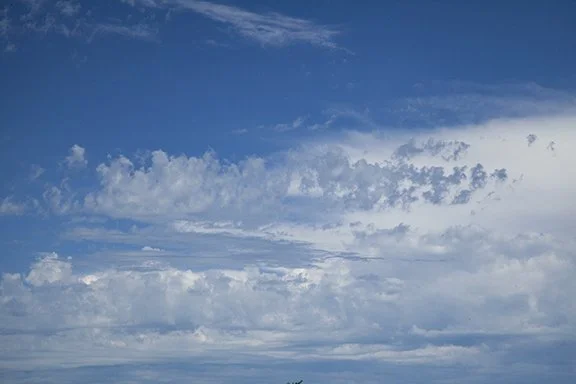The weather has its ‘ducks in a row’ in this photo. Four cumulus cells are visible here. Counting from left to right we see three main cells. The fourth is partially visible on the right edge of the photo. Each main cell has smaller areas of turbulence showing up as bulges protruding from the clouds.
In general, weather systems form on a continuous scale from very small, such as whirls the blow around the corners of buildings, to circulations that form on the scale (size) of clouds, thunderstorms, regional, national, continental to planetary systems. These circulations have similarities regardless of their size. Across the scale we can see the same shapes (circulations) interact. Some are more important in the smaller scales, such as tornadoes, while others are more important in larger scales, such as blizzards, but the designs are similar.
These cumulus clouds were part of a much larger weather system affecting the Upper Midwest. These cells formed in a line that extended for hundreds of miles. The entire system was organized from the largest to the smallest elements.
































